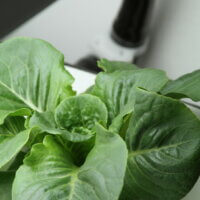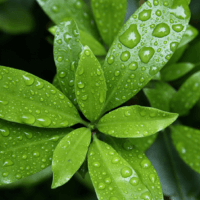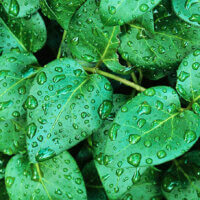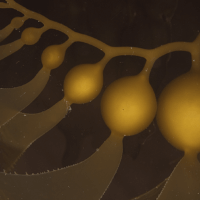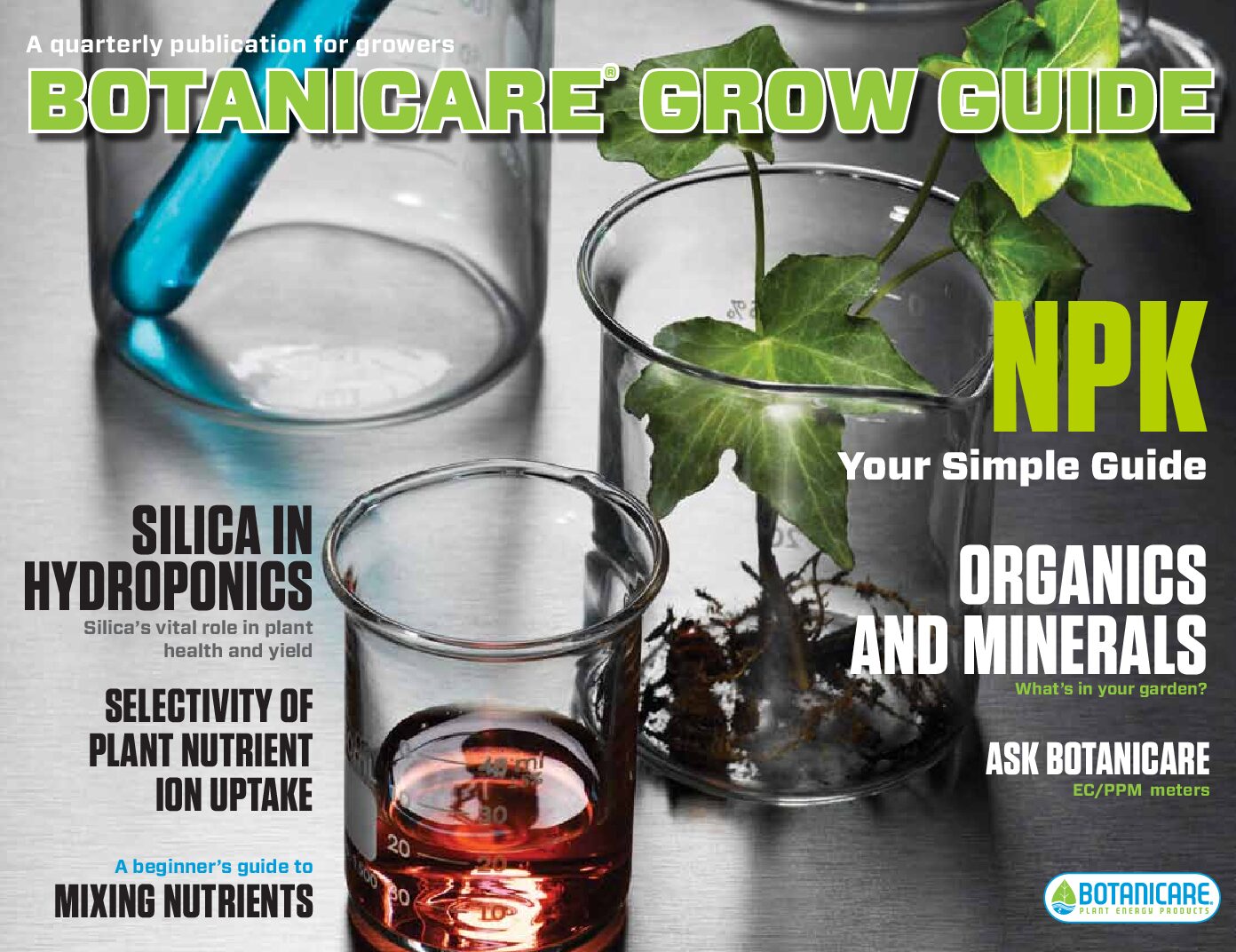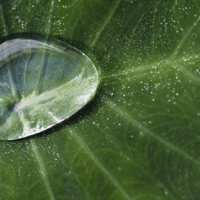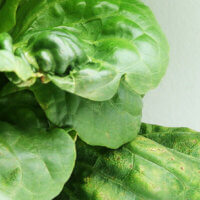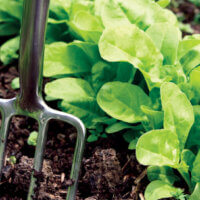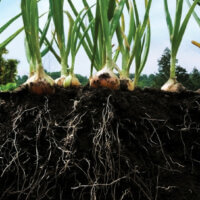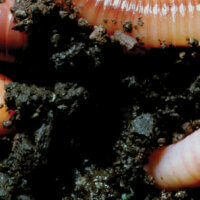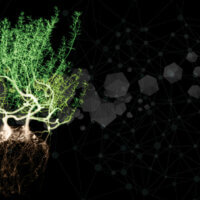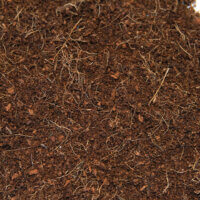A term used in hydroponics which describes bacterial colonies which work synergistically with plants to defend against harmful diseases or fungi, increase the uptake of nutrients, and/or aid in the breakdown of organic materials.
Deep water culture (DWC) is the one of the oldest method of hydroponics to date. In this system, the plants roots are submerged in water that is aerated typically by using an air pump and air stone. The advantage to this system is the simplicity of technology and high level of humidity in the root zone. The disadvantage of this type of system is that if the source of oxygen in nutrient solution is reduced or fails, there is limited capacity for the plants to maintain vigor. This method is extremely productive and popular for production of lettuce, herbs, and other leafy greens.
-
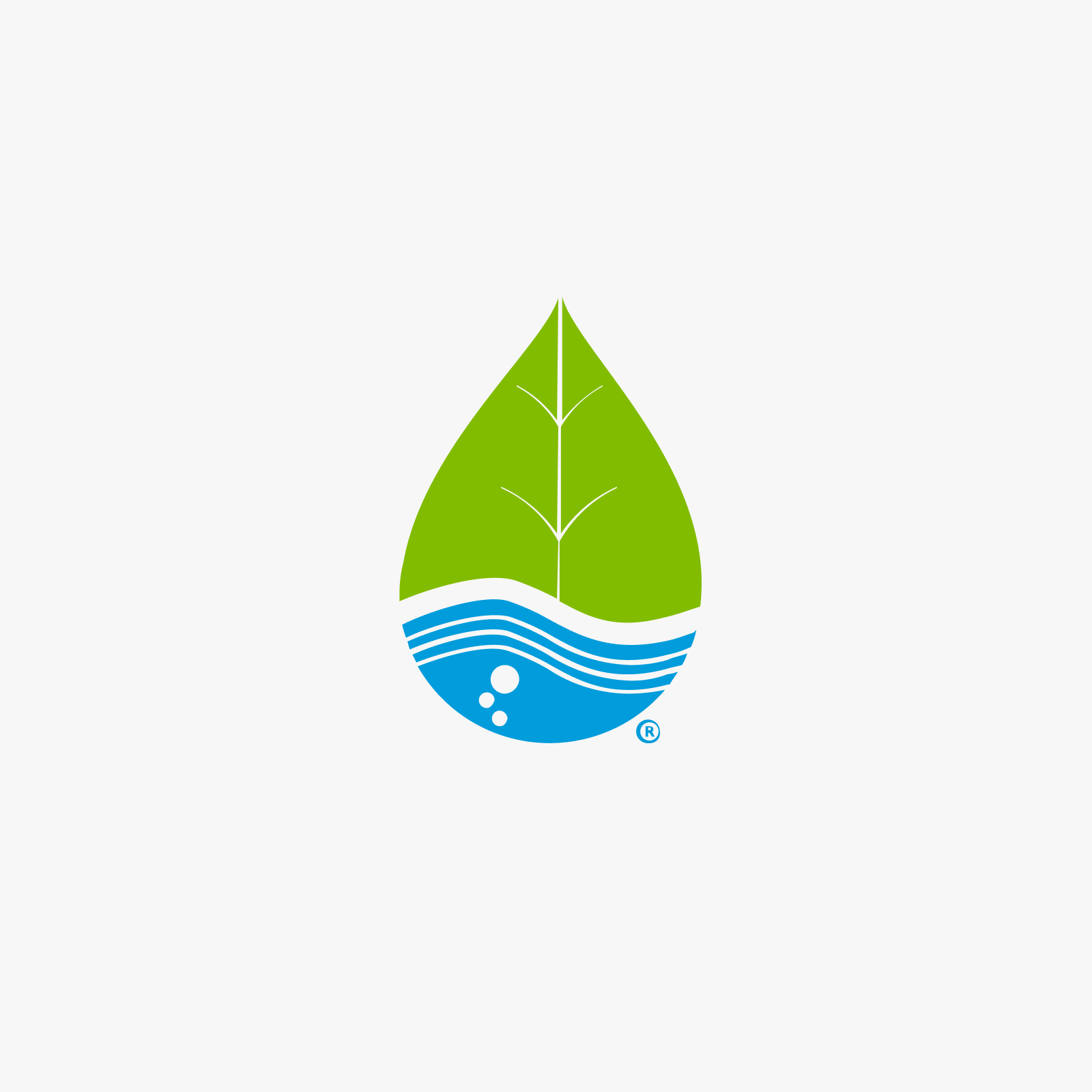
Five pros and cons of growing organically in a hydroponic system
by Guest Author Annie S. White, Freelance Technical Writer & Horticultural Consultant. The marriage of hydroponics and organics makes an...
-

Foliar Feeding: Nutrients and Beneficial Bacteria
By Derex Q. Zellars | Environmental Scientist Traditional methods used to protect plants from disease have been largely based on...
-

Foliar Spraying
Olympians wear high compression swimsuits that are nothing short of technological marvels. They reduce drag and allow athletes to swim...
In this method of hydroponics, a thin film of nutrient solution is constantly flowing across the plant roots in a tray or trough. Like aeroponics, this system utilizes very little to zero growing media for plant roots to colonize which in the event of pump failure gives very little time before roots dry out and can lead to loss of crop. The advantage of a NFT system is the high level of oxygen in the root zone and the relative simplicity of the components using for fertigation. This system is most popular for growing leafy greens and herbs at the commercial production level.
-

Nourish your Plants Above and Below with Seaweed
By Derex Q. Zellars | Environmental Scientist Scientific research has confirmed that seaweeds help in increasing yields, drought resistance, frost...
-

NPK Issue
Issue #2 is live. The NPK issue covers a number of topics including: A Simple Guide to NPK, A beginners...
-

Photoperiodism
Photoperiodism is the physiological reaction of organisms to the length of day or night. EQUINOX: EQUAL DAY AND NIGHT There...
-

Plant Stress Signs and Preventatives
Most growers know to keep an eye out for common plant stressors like insects, diseases, and water and nutrient levels....
-

Soil Conditioning 101: Better growing through chemistry
At the beginning of every planting season many gardeners begin the ritual of tilling up soil and preparing both new...
-

The Unseen World of Microbes in Grow Media
In one tablespoon of healthy soil there are as many organisms as there are people on the Earth. Soil microbes...
-

Understanding EC/PPM: Q&A with Blue Lab
We all understand the importance of applying nutrients at the correct strength and the appropriate time to achieve successful crop...
-

Vermicomposting: Reduce, reuse, recycle with the help of worms
Many of today’s gardeners want to improve their land’s fertility while also supporting green efforts. One option stands out as...
-

Vitamins in Plants
We all are familiar with the need for vitamins in the human diet. What about plants, do they require vitamins...
Water quality is one of the most important factors when growing plants hydroponically. This is because nutrients in solution can become unavailable due to interactions with salt. Water can also contain high levels of sodium and chloride that are toxic to plants. Botanicare recommends using reverse osmosis (R.O.) water when mixing nutrients, and for hydrating growing media like Botanicare’s Cocogro and Readygro. When you want to grow the best hydroponic crops you have to start with the best water. For more information on how you can get the best water for your plants, please visit our partner, Hydrologic.
-

Water Quality for Hydroponics
Water makes up as much as 90% of the mass of a plant- even more in some crops, such as...
-

When to Rinse or Buffer Coco Coir
If you are reading this, you probably already know what coco coir is, and what it means to be “buffered.”...
-

Why Plants Need Sugars and What They Do With them
Plant carbohydrates, in the form of sugars are the energy source by which all plants carry out their major functions....
The simplest form of hydroponics is the wick system of fertigating your plants using completely passive methods. In this system, plants draw up the nutrient solution via a fibrous material that is placed in a reservoir. The simplicity of this system is its only advantage because there are no moving parts there is little chance of failure as long as there is water available. The disadvantages of this system are that it does not allow the grower to control rate and frequency of irrigation and during warmer periods the wick system may not be able to keep up with the irrigation needs of the plant. This is the least popular type of hydroponic system and is rarely used at the commercial level.
